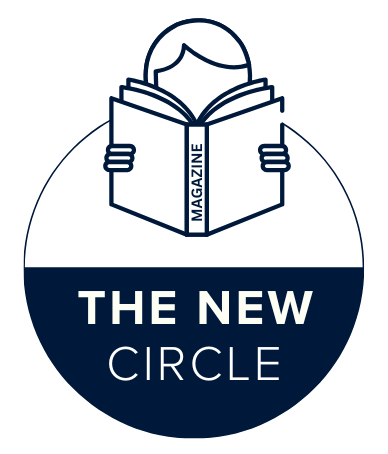Developing a Minimum Viable Product (MVP) is often the most crucial step in a startup’s journey. It helps you validate your idea, minimize risks, and save valuable resources. Yet, despite its importance, many founders misunderstand the purpose of an MVP and make costly mistakes that hurt their chances of success.
According to CB Insights, nearly 42% of startups fail because there’s no market need for their product, and 29% fail due to lack of funds. An MVP exists to prevent these exact scenarios—but only if it’s done correctly.
In this guide, we’ll break down the top 10 mistakes to avoid when developing an MVP, explain why they happen, and share practical solutions. You’ll also see how AI MVPs and technologies like Generative AI Development are reshaping the way startups approach MVPs today.
Ignoring the Potential of AI MVPs
One of the biggest missed opportunities today is overlooking artificial intelligence in MVP development. Startups can now leverage AI MVPs to build smarter products faster and at lower costs.
- The mistake: Many founders think AI is too complex or expensive to implement in an MVP.
- The consequence: They end up building outdated or manual MVPs that don’t scale.
- The fix: Explore AI integrations early. Tools like no-code AI builders, natural language APIs, and pre-trained models make it easy to add AI-driven features such as chatbots, personalization, or data analytics without heavy investment.
💡 Example: A healthcare startup used AI-powered symptom checkers in their MVP to validate demand for telemedicine services before investing in a full-fledged app.
Building Too Many Features Too Soon
An MVP should never be confused with a full product.
- The mistake: Founders cram too many features into the first release, thinking it will “wow” users.
- The consequence: Overengineering leads to delays, bloated budgets, and user confusion.
- The fix: Start with the “must-have” feature set—the one thing your product does best. Add secondary features only after validating demand.
📌 Pro Tip: Use frameworks like the MoSCoW method (Must-have, Should-have, Could-have, Won’t-have) to prioritize features logically.
Skipping Customer Research
Customer research is the backbone of any MVP strategy.
- The mistake: Assuming you know your customers’ pain points without evidence.
- The consequence: You build solutions that solve the wrong problems.
- The fix: Conduct surveys, interviews, and competitor analysis. Tools like Typeform, SurveyMonkey, or even LinkedIn polls can provide quick insights into user needs.
💡 Example: Slack initially began as an internal tool. Its founders validated its usefulness by testing it within their own team before launching to the public.
Neglecting Market Validation
Even the best ideas fail if the market doesn’t want them.
- The mistake: Launching without testing if enough people will pay for the solution.
- The consequence: Wasted resources on products that lack demand.
- The fix: Validate the idea with landing pages, email sign-ups, or crowdfunding campaigns. If people are willing to sign up—or even pre-pay—you know you’re onto something.
📊 Stat: According to Harvard Business Review, products that are pre-validated through early sign-ups have a 30% higher chance of long-term success.
Overlooking Scalability
Your MVP may start small, but it shouldn’t collapse under growth.
- The mistake: Building an MVP with no consideration for future scaling.
- The consequence: Redesigning infrastructure later costs 3x more than planning ahead.
- The fix: Use scalable cloud platforms (AWS, GCP, Azure) and modular code structures. Even if your MVP handles 100 users today, it should be ready for 10,000 tomorrow.
Not Leveraging Feedback Loops
Feedback is the lifeline of MVPs.
- The mistake: Launching an MVP but not gathering systematic user feedback.
- The consequence: You’re left guessing what users want, which defeats the purpose of an MVP.
- The fix: Use analytics tools (Mixpanel, Amplitude, Hotjar) to monitor user behavior and combine it with surveys or interviews. Set up a feedback loop: build → measure → learn → iterate.
💡 Example: Instagram pivoted from a check-in app (Burbn) to a photo-sharing platform after user feedback showed people loved the photo feature most.
Misunderstanding the Role of Design
Design isn’t just aesthetics—it’s usability.
- The mistake: Believing design doesn’t matter in an MVP.
- The consequence: Poor user experience prevents users from engaging, even if the idea is good.
- The fix: Keep designs simple but user-friendly. Focus on intuitive navigation and responsive layouts. A polished MVP increases credibility.
📊 Stat: A Stanford study found that 75% of users judge a startup’s credibility based on design quality.
Ignoring Emerging Technologies Like Generative AI Development
Technology is evolving fast, and MVPs that fail to adapt risk falling behind.
- The mistake: Overlooking how tools like Generative AI Development can accelerate product creation.
- The consequence: Longer development cycles and higher costs.
- The fix: Use generative AI for:
- Automated content generation (blogs, product descriptions).
- Personalized customer experiences (chatbots, recommendations).
- Rapid prototyping (design mockups, code suggestions).
- Automated content generation (blogs, product descriptions).
💡 Example: Jasper AI, a content creation startup, validated its MVP by integrating generative AI to automate copywriting—a move that attracted massive early adoption.
Failing to Market the MVP
“If you build it, they will come” is a myth.
- The mistake: Believing that launching an MVP alone guarantees traction.
- The consequence: A great product with no users.
- The fix: Market your MVP early using:
- Social media campaigns.
- Community engagement (Reddit, Product Hunt, Indie Hackers).
- Content marketing with SEO-driven blogs.
- Small paid ads to test messaging.
- Social media campaigns.
💡 Example: Dropbox’s MVP video went viral, creating a waitlist of thousands before the product even launched.
Treating the MVP as the Final Product
An MVP is not the end—it’s the beginning.
- The mistake: Stopping iteration after the MVP launch.
- The consequence: Missing opportunities to grow, pivot, or innovate.
- The fix: Use MVP insights as a roadmap for scaling. Keep evolving features, improving UX, and testing new markets.
📊 Stat: According to Lean Startup principles, companies that iterate continuously are 2.5x more likely to succeed than those that treat MVPs as final products.
Bonus Section: Practical Checklist for Founders
Before launching your MVP, ask yourself:
- Have I validated the problem with real users?
- Does my MVP solve a single, clear pain point?
- Have I planned a feedback loop?
- Can my infrastructure scale?
- Do I have a marketing plan ready?
If you answer “no” to any of these, revisit your strategy before going live.
Conclusion
An MVP is a powerful tool, but only if approached strategically. Avoiding these 10 mistakes ensures your startup validates ideas efficiently, saves resources, and positions itself for long-term growth.
Leverage modern approaches like AI MVPs to build smarter, faster, and leaner. Don’t ignore innovations like Generative AI Development, which can supercharge prototyping, personalization, and automation.
Remember: your MVP isn’t just a product—it’s a learning tool. Use it wisely, and it can transform your idea into a scalable business.
FAQs
1. What’s the biggest misconception about MVPs?
That they’re “incomplete products.” In reality, MVPs are strategic experiments to test core ideas.
2. How can AI help in MVP development?
AI speeds up prototyping, automates repetitive tasks, and personalizes user experiences, making MVPs smarter and cheaper.
3. Why is Generative AI relevant for MVPs?
Generative AI reduces development time by automating content, designs, and even coding, helping startups test faster.
4. How much budget should I allocate for an MVP?
Depending on complexity, MVPs can cost between $5,000–$50,000. Using AI tools and outsourcing can lower this range significantly.
5. How do I know if my MVP is successful?
If it validates customer demand, attracts early adopters, and provides clear feedback for iteration, your MVP is a success.
You May Also Read: Can AI Video Generation Adapt to Different Cultural Storytelling Styles?

